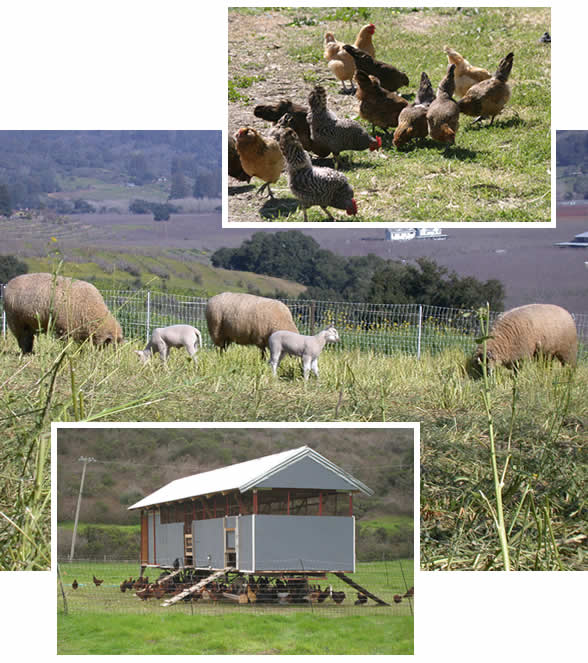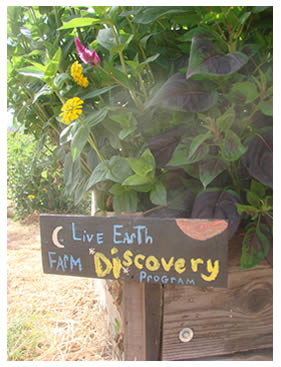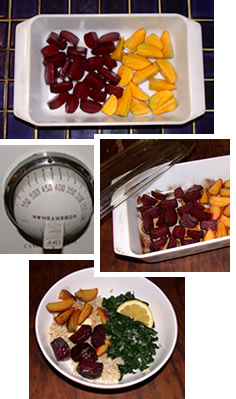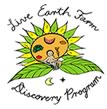What's in the box this week
~~~~~~~~~~~~~~~~~~~~~~~~~~~~~~~~~~~~~~~~~~~~~~~~
Occasionally content will differ
from this list (typically we make a substitution), but we do our best to
give you an accurate projection. For any produce not from Live Earth
Farm (LEF), we will list the name of the farm in parentheses after the item.
Please always go by what's in 'the binder' at your pickup site. Things can change between the time this newsletter goes out and when the shares are packed. Thanks!
Winter Share (inside the box)
Fuji and Pippin (green) apples
Red beets (with green tops)
Broccoli (Lakeside Organic Gardens)
Brussels sprouts
Cabbage
Carrots
Rainbow chard
Cilantro
Collard greens
Red Russian kale (2 bunches)
Leeks
Fresh mushrooms, either oyster or shitake (from Far West Fungi)
Rutabagas
1 jar of crushed mixed heirloom tomatoes (from LEF tomatoes;
prepared by Happy Girl Kitchen. see below)
Preserves Option <---OUTSIDE the box. See next to your name on checklist!
(all items made with LEF produce and prepared by Happy Girl Kitchen. see below.)
1 jar ketchup (Santa Clara County pick-up sites)
1 jar tomato salsa (Santa Cruz County pick-up sites)
[there is not enough ketchup or salsa to give one to everybody, so that's why some of you are getting one and some are getting the other]
1 jar cumin green beans
1 jar apple chutney
Bread Option
This week's bread will be sesame whole wheat
|
What's in the preserves (ingredients)
~~~~~~~~~~~~~~~~~~~~~~~~~~~~~~~~~~~~~~~~~~~~~~~~
Jordan Champagne of Happy Girl Kitchen wanted members to have an ingredient list for the preserves (people with allergy and dietary issues want to know, and others simply like to know). ;-)
(Inside the box this week)
Crushed Heirlooms: Mixed variety of heirloom tomatoes, sea salt. Ingredients are organic. We have neatly tucked these Live Earth jewels into jars for you in order to preserve their vine-ripened freshness. These colorful organic heirloom tomato chunks with a pinch of sea salt are ready to make any dish scrumptious. Wonderful for soups and sauces, these tomatoes will make your meal something to remember.
(In the Preserve Option this week)
Country Ketchup: Dry Farmed Tomatoes, apple cider vinegar, honey, evaporated cane juice, spices and sea salt. All ingredients are organic. This thick ketchup is pretty much pure dry farmed tomatoes and is a real treat on all sorts of winter meals with kale, chard and potatoes. Also makes a start to a fabulous dressing.
***or***
Salsa: Heirloom tomatoes, onions, peppers, lemon juice, cilantro, jalapenos, garlic, sea salt. All ingredients are organic. This salsa is made with fresh ripe heirloom tomatoes and has a subtle sweetness to it that comes straight from the earth. You can taste the warmth of the sun in each velvet mouthful.
Chutney: Apples, cider, evaporated cane juice, honey, spices and salt. All ingredients are organic. We loved using Live Earth's apples to make this sweet and spicy chutney. A traditional Indian condiment, our chutney is excellent on a variety of curries or as a snack with bread and cheese.
Cumin Green Beans: Green beans, filtered water, apple cider vinegar, sea salt, cumin, black peppercorns, and chili. All ingredients are organic. These are great for an appetizer for your festive parties or as a crunchy addition to your potato salads. Also a great stir for your bloody mary drink. Enjoy a tribute to my favorite spice, cumin!
|
Diversifying with balance in mind
~~~~~~~~~~~~~~~~~~~~~~~~~~~~~~~~~~~~~~~~~~~~~~~~ On Sunday afternoon, during a brief respite from the rain, Elisa and I walked over to the goat pen to discover that Ginger, one of our "mama" goats, had given birth to four kids. We must have missed the actual birth by only minutes, as the last kid was still trying to get up on its wobbly legs while being licked clean by her mother. Birthing four kids is quite a feat, even by Live Earth Farm standards; typically a goat will birth two kids, although it's not unusual for an adult mother to sometimes birth three. After spending most of a rainy day indoors, the exciting news had everyone gathering in the goat pen to welcome the new arrivals and make sure mother and kids were taken care of. Most farms nowadays tend to be very specialized, following economic models favoring mono-cultures, and are typically divided into operations either for raising livestock or plant crops. Although I am more of a crop farmer, I am convinced that a farming system which integrates both animals and plants mimics more closely the relationships found in natural ecologies. With this idea in mind, we are taking a few steps this season to both diversify and expand our current livestock operation. In January we adopted a small flock of sheep, which has doubled in the last month with the birth of 11 lambs (you are invited for a first-hand visit on our "Sheep to Shawl" event on March 20th - see details below). Together with the sheep, which graze on our sloping fields under apricot and apple orchards, we plan on raising a flock of 300 laying hens to augment TLC's popular pasture-raised eggs currently available through the CSA and at weekly farmers markets (see picture, below, of mobile chicken house at Fifth Crow Farms in Pescadero, similar to what we have in mind). Developing a more symbiotic relationship between animals and plants is a challenge; we have a steep learning curve ahead of us in attempting to master the many physical, biological, behavioral, economic and administrative complexities. But the long-term benefit of building healthier soils -- and ultimately a more resilient farm organism -- is exciting. - Tom 
|
Keep GE out of Organic!! Comment period extended to March 3
~~~~~~~~~~~~~~~~~~~~~~~~~~~~~~~~~~~~~~~~~~~~~~~~ If you didn't have a chance to comment on this before the original deadline of Feb 15, you now have a second chance! Please comment if you can. The most important message to get across to the USDA is, as consumers, we DO care about what is allowed to be classified as organic. Here's the info again:The USDA is considering deregulating Monsanto's Genetically Engineered "Round-up Ready" alfalfa, and this will have far-reaching consequences for the organic community. If you can help out, please submit your comments before March 3rd. Among other things, USDA claims that there is no evidence that consumers care about contamination of organic alfalfa and foods derived from GE alfalfa (think: dairy and meat), and we need to let them hear our voices loud and strong that this is not true. If you wish to learn more about this before commenting, the Center for Food Safety has a well researched, detailed fact sheet you can read. All organic consumers should be concerned about this, even if you do not consume organic meat or dairy.The easiest way to submit comment is via one of three organizations who have prepared easy comment-submitting forms for online use. Here are the links: www.FoodandWaterWatch.orgwww.CenterforFoodSafety.orgwww.OrganicConsumers.orgThank you everyone! Debbie
|

Sheep to Shawl
~~~~~~~~~~~~~~~~~~~~~~~~~~~~~~~~~~~~~~~~~~~~~~~~ Come and celebrate the Spring Equinox at Live Earth Farm's "Sheep to Shawl" Day!
When: Saturday March 20th 10 am - 2 pm
Participate in the whole process of bringing wool from
the sheep to the shawl, including every step in between.
Stations include:
Shearing
Washing
Carding
Dyeing
Spinning
Knitting/Crocheting
Felting
Storytelling
We will have experts to guide us through all of the
steps needed to turn sheep wool into clothing.
LEF CSA members participate for FREE.
The General Public is welcome too, but please sign up (RSVP) and bring a $15 donation per carload, which will go to our educational non-profit, the Live Earth Farm Discovery Program.
To RSVP, please email LEFeducation@baymoon.com
Note: If you are an expert in any part of the process and
would like to volunteer at a station, please let us know ASAP.
|
Kid's Summer Camp at Live Earth Farm - nearly full; sign up soon!
~~~~~~~~~~~~~~~~~~~~~~~~~~~~~~~~~~~~~~~~~~~~~~~~  If you missed it in our last newsletter, the Live Earth
Farm Discovery Program is going to have a
"summer-celebration-art-on-the-farm" day camp this July! Our education team would like to
invite kids from within our CSA community to join us for a weeklong adventure
day camp. If you are interested, sign up soon, as there are only a few spots left! Please click here for ALL the details including who to contact to sign up.
|
Happy Girl Kitchen Cheese and Kefir workshop rescheduled
~~~~~~~~~~~~~~~~~~~~~~~~~~~~~~~~~~~~~~~~~~~~~~~~
This workshop, originally planned for last Sunday, had to be rescheduled due to a death in Jordan's family. The new date is now Saturday April 10th. See Calendar listing, below.
|
Alert: support produce bags from beneath
~~~~~~~~~~~~~~~~~~~~~~~~~~~~~~~~~~~~~~~~~~~~~~~~
With all the dense root veggies and cabbage and such, our winter CSA shares are proving to be quite heavy, so when you take your bag out of its box, please be sure to support the weight of the bag from underneath. Remember, there are glass jars of preserves inside, tucked in amongst your produce, so you don't want your bag to tear, drop its contents, and break the jar ;-)
|

About Brussels sprouts and aphids
~~~~~~~~~~~~~~~~~~~~~~~~~~~~~~~~~~~~~~~~~~~~~~~~
As you have probably noticed,
the Brussels sprouts tend to have aphids. Brussels are a notoriously difficult
crop to keep aphid-free. We wash them down twice after harvesting and before
bagging them for you, but alas, they will almost always have some. The good
news is, we learned some great new techniques for aphid control in Brussels
sprouts at the EcoFarm Conference in January... the bad news is, they are
techniques which will have to wait for next season, as it involves walking down
the rows and hand-placing predator bugs on each plant right before it is about
to start producing (ours are already producing, so the window of opportunity
has passed).
How do I deal with them? What I
do is I just trim the bottom, peel off a few outer leaves, then give 'em a
little rinse after that, and that usually that takes care of it. It does
require prepping each individual sprout, but that is typical for any Brussels
sprouts recipe. I also cut them in half before cooking, and that's a good way
to confirm that there aren't more in the inner layers. Sometimes there will be
sprouts with too many aphids, and in that case I just compost them. Not ideal,
I know, but I am willing to put up with the extra preparation because they are
just so darned yummy!!
Debbie
|
Notes from Debbie's Kitchen~~~~~~~~~~~~~~~~~~~~~~~~~~~~~~~~~~~~~~~~~~~~~~~~ Click here to go to the recipe database.
Did you all enjoy trying the crispy leeks recipe? Man, I made those again and they are just so good!! If you missed it, see last week's newsletter. Meanwhile, here's some new stuff!
- Debbie
Brussels sprouts with
fennel, pistachios and Pernod (with flambe option)
from Debbie's kitchen
will serve 2 to 4, depending on
portion size
Okay, this is my new favorite
way to make Brussels sprouts. Actually I still love them the other ways I cook
them so that's not quite accurate... but anyway, this is really good! Having a
steady supply of sprouts over the winter season, I was able to spend more
mental time with them, pondering their qualities and what flavors I thought
would pair well with them. The thing that kept coming back to me was 'nutty',
and for some reason 'pistachio' in particular... I've now decided that's a match made in
heaven!
So the first thing to know
about this recipe is, you can make it three ways... with just the pistachios,
with the fennel seed and the pistachios, or with those plus the 'finish' splash
of Pernod at the end. They are all good. Just don't leave out the pistachios!
One bag of sprouts (~3/4 lb)
from your box
2 to 3 tbsp. shelled pistachios
(I use Trader Joe's dry-roasted)
~ 2 tbsp. butter
Olive oil
~ 1 tsp. fennel seed (optional)
sea salt
Pernod [an anise/fennel
liqueur], a healthy splash or two (optional)
First, prep your sprouts. Trim
bottom, peel off as few outer leaves as is necessary to get to a clean core
(see " about Brussels sprouts and aphids", above), rinse lightly if needed, then
cut in half vertically (through the base).
Grind the fennel seed a little
in a mortar and pestle to release the flavorful oils.
Steam prepared sprouts for
barely 2 minutes; while sprouts are steaming, heat a heavy-bottomed skillet (I
LOVE my cast iron!) over medium heat, add a splash of olive oil and the butter
and swirl until melted and beginning to bubble. Scatter fennel seed over the
butter/oil, then as soon as the sprouts' two minutes are up, dump them into the
skillet on top of the fennel. Re-arrange them cut-side down as much as
possible, then let cook until they begin to brown on the cut side, maybe 2 to 3
minutes, depending on how high a temperature you're using and how many sprouts
are in the pan (cast-iron holds a lot of heat). After about a minute of cooking
time, scatter pistachios over all and shake pan a bit, to get them to nestle
down in between the sprouts and pick up a little coating of butter/oil.
Sprinkle all with salt. When the sprouts are clearly browning on the bottom,
turn up the heat and splash Pernod over them... oh, I don't measure, but I'll
say around 3 tablespoons worth. Shake pan and cook briefly, until Pernod has
mostly evaporated or been absorbed, then transfer out of pan to plates or
serving dish. Can be kept warm in the oven while you're preparing other dinner
things, if needed.
Fun note: if your temperatures
are right, you can actually make this really fancy (at least it seems that
way!), i.e. 'flambe' it. If you have a gas stove, this can happen spontaneously
as the fumes from the heated alcohol catch fire. This is not a FIRE fire (like
a get-out-your-extinguisher fire), but a true flambe, which consists of
beautiful, rosy flames dancing delicately across the surface of the pan. The
flames are ephemeral; ten to twenty seconds and they fade as the alcohol is
burned off. Really fun though! If you don't have a gas stove, just have a match
or lighter or something handy, and once the Pernod has gotten hot (probably a
matter of seconds after having added it), bring a flame towards the pan. When
it gets close enough to the fumes, it will ignite. Enjoy!!
Cilantro-kale "Hot Salad"
This is a recent variation on
my original 'hot salad' recipe. If you love the aroma of cilantro, you're gonna
love this!
1 to 2 bunches kale (my fave:
red Russian), washed as needed
a generous amount of cilantro
juice from 1 to 2 lemons (or 1
lemon, 1 lime!)
olive oil
flavorful sea salt
For this hot 'tossed salad',
rather than my normal routine of stripping the leaves off the stems, cooking
whole, then chopping after, in this case I'll strip the leaves off the stems,
then tear them into pieces. It's a little more work, but makes a nicer salad
presentation.
Cook kale in well salted
boiling water about 2 minutes. Drain well, squeeze out extra water with the
back of a spoon (or your hands, if cool enough to handle), then place in a
bowl, separating the leaves with your hands into a loose pile (basically you
want to undo the lump you created by squishing the water out).
Roughly chop the cilantro and
add to the kale and toss together while kale is still warm. This volatilizes
the oils in the cilantro and creates a heady cilantro-aroma-therapy session!
Pour lemon juice over all, then
drizzle generously with olive oil and toss. Sprinkle well with salt, then toss
again. Taste and adjust balance of lemon, oil, and salt.
Note: this cilantro-ey green
yumminess is MOST excellent tucked into carnitas burritos! Yes, confession time
is in order here. On days when I'm working late at the farm (6:30 - 7pm) I'll
sometimes call my husband to let him know I'm leaving (it's an hour's drive
from the farm to my home in San Jose), and he'll go pick up some Super Taqueria
carnitas burritos [my favorite - I'm a sucker for good carnitas!] so we can
have dinner when I get home, instead of me spending an hour or more preparing
dinner and then us eating at 9 or 9:30pm (you guessed it - he doesn't cook).
But I always have to have some green with my dinner, so I'll quickly cook up
some kale hot salad and we'll have that with. We like tucking forkfuls of the
kale into the burritos as we eat them. If I have fresh cilantro on hand (which
is almost always), sometimes I'll bring out a handful and we'll just tuck
cilantro into the burrito as we eat them. But then one time I thought of combining the
two, throwing the cilantro on top of the lump of cooked kale and then chopping
them together... that was when the new taste sensation occurred. Don't forget
the hot sauce!
Simple roasted beets
People often ask me about beet
cooking times, so this is current favorite way of roasting them.
Preheat oven to 425 degrees.
Scrub beets well to remove any dirt or hair roots (see earlier discussion about veggie scrub brushes), trim top and
tails [as always, if the leafy greens are still attached, cut those off, wash
and save to use separately], and cut into wedges. Do not peel - the skin is
tasty, so leave it on!
 Put beet wedges in a bowl,
drizzle with olive oil and toss. For added zing, whisk some balsamic vinegar
together with the olive oil and toss beets with that (but plain is fine too).
In the photo I had both red and golden beets, so I tossed the golden ones
separately with white balsamic and olive oil.
Spread beets in a single layer
in a glass baking dish (ideally one with a lid), sprinkle generously with salt,
cover. If you don't have a dish with a lid, cover dish tightly with foil. Place
dish in preheated oven and cook for 45 to 50 minutes. The beets are done at
this point, but you have some leeway; oftentimes if I haven't finished
preparing other parts of dinner, I'll just turn off the heat and leave them in
the oven (covered) to stay hot. If they seem plenty done, crack the oven door a
bit. If they cook a little more, it doesn't hurt them though!
Serving-wise, you can eat them
just like that. In the picture, I just ate them with warm brown rice and butter and -- what else -- hot salad!
They are good warm. They are
good cold and left-over the next day.
Beets also pair wonderfully with
goat cheese, so try crumbling some over the top when you serve them, or mixing them up with goat cheese to create a creamy coating... hot or
cold, it's really good.
|
|
2010 CALENDAR
~~~~~~~~~~~~~~~~~~~~~~~~~~~~~~~~~~~~~~~~~~~~~~~~
Visit our calendar page on our website for photos and videos of past events if you would like to get the flavor of what it is like visiting the farm!
Live Earth Farm Discovery Program for WEE ONES
3rd Tuesday of every month, 10:30am - Noon
(free for children 0 - 3 yrs; $10 - $15 per adult)
 Mothers, fathers, grandparents, caretakers of any kind... bring the babe in your arms to experience the diversity of our beautiful organic farm here in Watsonville. We will use our five senses to get to know the natural world around us. The farm is home to over 50 different fruits and vegetables, chicks, chickens, goats, piglets, and the many wild members of the Pajaro watershed. Mothers, fathers, grandparents, caretakers of any kind... bring the babe in your arms to experience the diversity of our beautiful organic farm here in Watsonville. We will use our five senses to get to know the natural world around us. The farm is home to over 50 different fruits and vegetables, chicks, chickens, goats, piglets, and the many wild members of the Pajaro watershed.
For more information, contact Jessica at the LEFDP office: (831) 728-2032 or email her at lefeducation@baymoon.com.
Happy Girl Kitchen's 2010 Workshop Schedule at LEF
March 6 (Saturday) - Fermentation (sauerkraut, kimchee and kombucha)
April 10 (Saturday) - Cheese and kefir
June 6 (Sunday) - Cherries and spring berries
July 10 (Saturday) - Apricots, strawberries and blackberries
September 12 (Sunday) - Heirloom tomatoes
October 2 (Saturday) - Pickles
Contact Jordan if you have any questions
jordan@happygirlkitchen.com
http://www.happygirlkitchen.com
Community Farm Days Schedule
(All Community Farm Days are Saturdays unless otherwise noted.)
March 20 - Sheep to Shawl (see details above, this week's newsletter)
May 29 - Three sisters planting in the field! Help sow pumpkins, corn, and beans
June 19 - Summer Solstice Celebration and Strawberry U-pick
July 3 - Apricot and Strawberry U-pick
July 12 thru 16 - Summer Celebration Art on the Farm Day Camp!
Aug 28 - Totally tomatoes. From farm to fork, cooking with tomatoes and making farm-fresh cheese. Also U-pick raspberry and tomato day!
Sept 25 - LEFDP Second Annual Fundraiser
Oct 23 - Harvest Celebration and Apple U-pick
|
|